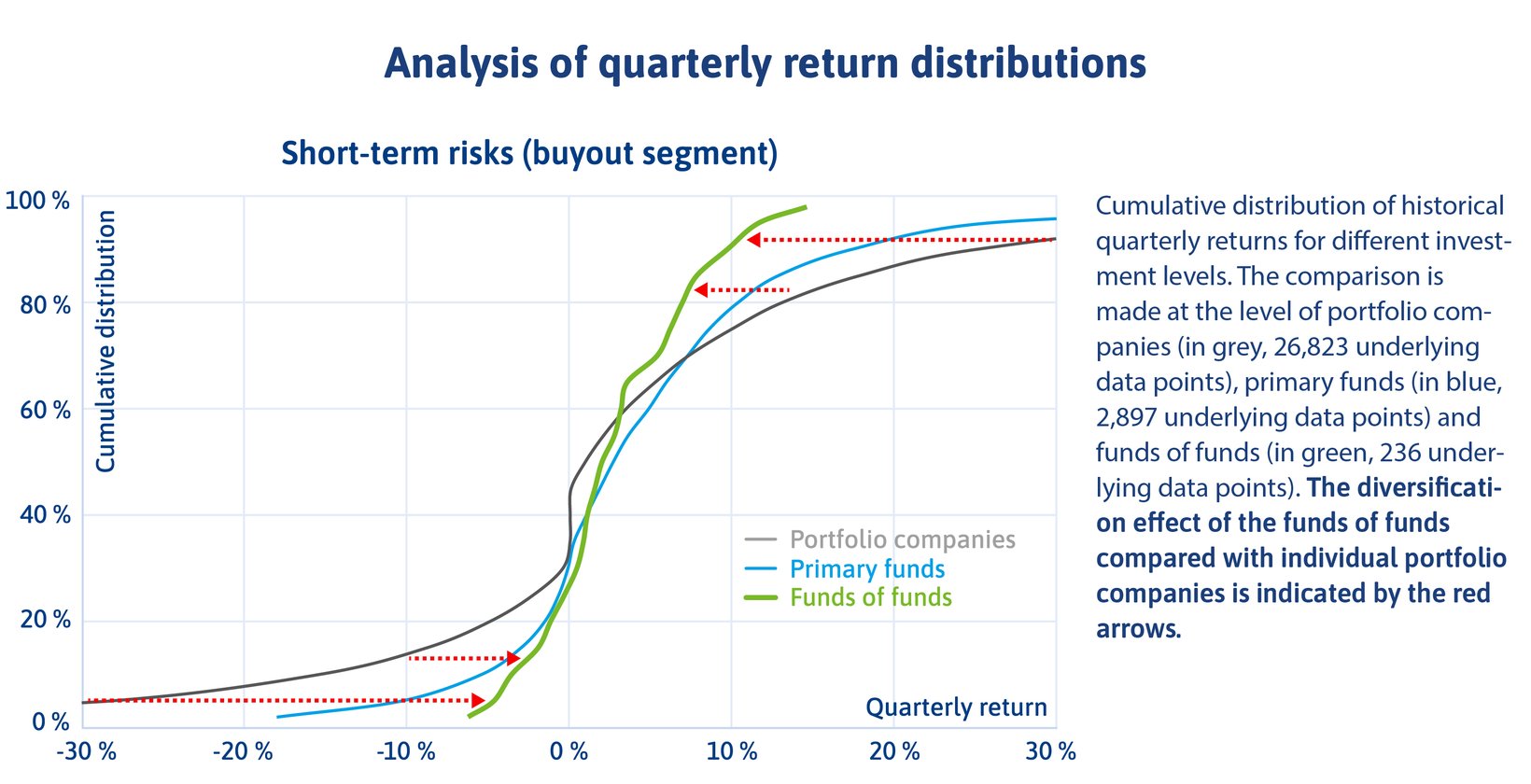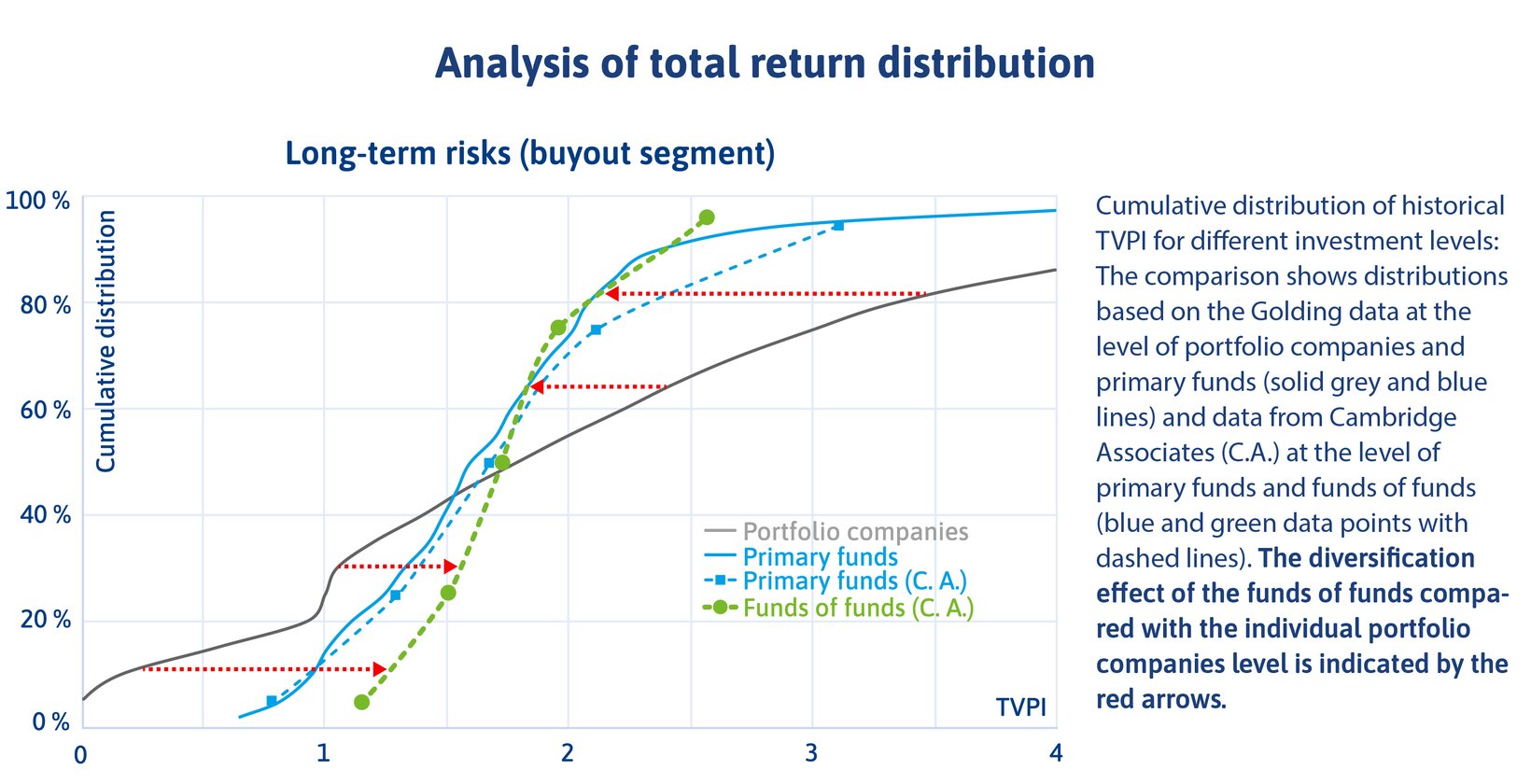- Volatility of quarterly returns down by 90 per cent compared with individual investments
- Positive diversification differential over individual investments and individual funds is even more important for long-term investors
- Basis for the analysis was over 100,000 data points from 2000 to 2021 for the asset classes buyout, infrastructure and private credit
- Institutional regulatory framework (CRR III) does not give sufficient weight to the significant diversification benefits of private market funds of funds
Munich – Golding Capital Partners, one of Europe’s leading independent asset managers for alternative investments, has quantified in a new study the diversification advantages of private market funds of funds compared with individual funds and direct investments in operating portfolio companies. On the basis of over 100,000 data points from 2000 to 2021 the study measures both the short-term and long-term performance of investments over their entire lifetime, as expressed by the quarterly return and the multiple of money (TVPI, Total Value to Paid-In). The significant advantage of up to 90 per cent for risk diversification by means of funds of funds is confirmed for the buyout asset class and fundamentally also for infrastructure and private credit.
“The aim of the study is to back up intuitive conclusions from decades of investment experience with concrete historical data. By exactly how much do funds of funds reduce investors’ risk of loss, especially in private markets? Another particularly interesting aspect was the comparison between the asset classes buyout, infrastructure and private credit. And indeed, in all three cases we can definitely recommend the vast majority of investors to diversify via funds of funds. Both in the short and long term, diversification – especially across several parameters – makes a decisive contribution towards stabilising portfolios and smoothing cash flows”, says Dr Matthias Reicherter, Managing Partner and CIO at Golding.
“In the specific case of CRR III the legislators should readjust the current reform proposals. Banks and savings banks should not have to use the same high capital adequacy ratios for broadly diversified funds of funds, with their demonstrably stable risk-return profile, as for much more volatile individual fund investments. This one-size-fits-all approach ignores the differences in the risk profiles and so could even encourage banks to make much riskier investments. This would run counter to the declared objective of making bank balance sheets more resilient”, adds Christian Schnabel, Managing Director at Golding.

The positive impact of diversification on income volatility is clearest in the buyout asset class. In the short-term analysis, the standard deviation of quarterly returns from direct investments in portfolio companies is 72 per cent, compared with 26 per cent for individual funds (primary funds) and just five per cent for funds of funds. This represents a reduction in volatility of 93 per cent. For the asset classes infrastructure and private credit the data history does not go back quite as far, but the reduction effect here too is around 90 per cent.

In the long-term analysis on the basis of multiples of money (TVPI), the stabilising effect is even more marked. Whereas a quarter of all investments in portfolio companies between 2001 and 2021 returned no more than the invested capital, investments in primary funds had the same probability of multiplying the invested capital by a factor of up to 1.23. For funds of funds the figure for the multiple of money was as high as 1.5. In five per cent of the observed cases the investments in portfolio companies turned out to be a write-off, whereas investments in portfolio funds experienced a loss with a multiple of 0.8. By contrast, the worst five per cent of funds of funds still generated a positive multiple of up to 1.15. This demonstrates that, from a historical perspective, the risk of losses for funds of funds investments in the buyout sector can be virtually ruled out – as long as investors (are able to) plan accordingly for the long term.
Details of the study can be downloaded here.

